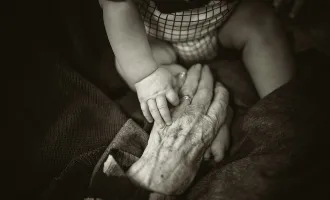UCSF’s Ebola treatment center is a permanent commitment to treating highly infectious diseases
As UC San Francisco transitions its personnel and operations from the Mt. Zion campus to Mission Bay, one critical piece of UCSF infrastructure will remain behind: the newly constructed Ebola treatment center.
The center is one of 49 throughout the country (including five in the UC system) designated for treating Ebola by the Centers for Disease Control and Prevention as of Jan. 15—though the list is updated weekly, according to the CDC website.
“Typically speaking, when you have an Ebola patient you can’t keep going in and out, so now everything is regulated and up to standards by the state and [the facility] is good to go,” said Tim Groves, the UCSF lead nurse for the project.
As of today the facility is capable of treating one patient, with the eventual goal of having two isolation rooms. Groves and more than 30 other health care providers have taken exhaustive, state-of-the-art training to use the facility. In the event that UCSF may need to treat an Ebola-stricken patient, these highly trained personnel will perform the intricate procedures that will safely transport patients from specially designed AMR ambulances to the fourth floor Mt. Zion treatment facility. UCSF Mt. Zion was chosen due to its location, as well as its relative isolation from large patient populations that will exist at the Mission Bay Medical Center and that currently exist at UCSF’s Benioff Children’s Hospital at Parnassus.
“If we were to receive an Ebola patient, the entire fourth floor would be isolated to personnel required for treatment,” said Groves. “We’ll even have dormitories for volunteer health providers to stay during their 21-day period of monitoring.”
One of the many features that make this unit distinct is the use of technology to both isolate the patient and prevent exposure to health care providers. The patient’s room is equipped with negative air pressure, as well as an array of dedicated equipment to reduce the risk of cross-contamination. Just outside the patient room is a specialized anteroom with a charge nurse dedicated to ensuring proper donning and doffing procedures are followed. Any materials that enter the patient’s room, such as scrubs and shoes, are either disposed of or autoclaved; even dedicated undergarments and socks have been purchased and will not be reused.
Lateral to the patient’s room is the support area, separated by a large, glass wall. There, a health care provider will monitor the patient and the provider who is directly interacting with the patient to ensure all procedures are followed and to avoid accidental exposure. A dedicated lab space in the facility ensures that routine lab work done for the patient using infectious material never leaves the confines of the facility.
Coordination between UCSF policymakers, the CDC, California’s Department of Public Health, and the San Francisco Department of Public Health helped garner UCSF’s distinction as a designated Ebola treatment center. Yet, with such an outpouring of UCSF investment into this facility in the form of personnel and more than a million dollars, its utility will extend beyond the current Ebola epidemic.
“This facility was built for Ebola, but we can use it for any disease requiring respiratory isolation, anything that would require biocontainment—like back when we had H1N1, this facility would have been ideal,” said Groves.
UCSF’s commitment to the Ebola epidemic is far-reaching with around 11 campus members aiding in Ebola-stricken regions of western Africa. More than 70 medical personnel have volunteered to enter Ebola training. Currently the campus has more than 30 fully trained providers on call to respond in the case that UCSF receives an Ebola patient.
Although reports have indicated that the Ebola outbreak is trending downward, the experience treating and preparing for Ebola patients will invariably become important in many other infectious diseases with high mortality.
“This facility and response is definitely a part of [UCSF’s] legacy, in its commitment to global health and infectious disease,” said Associate Chancellor Theresa O’Brien.
Even beyond the current epidemic, UCSF will remain committed to research in prevention of another outbreak, as well as better diagnostics and treatment for Ebola patients. The community can follow the efforts of UCSF volunteers at globalhealthsciences.ucsf.edu/education-training/blogs.
“We want to be able to tell the story of our volunteers, to let the community know what they are doing,” said O’Brien.


